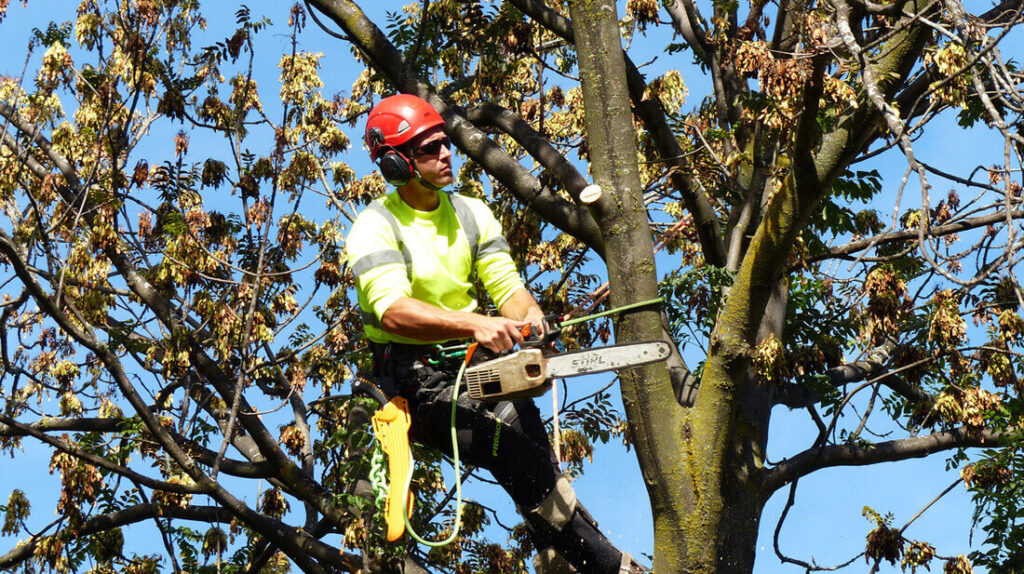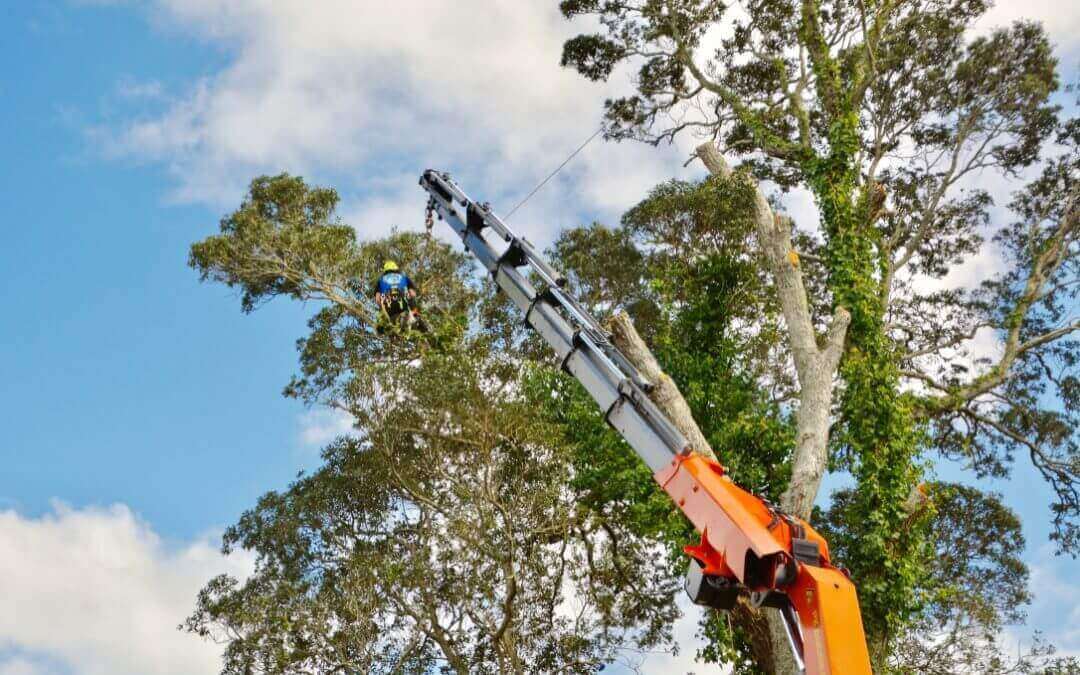The Blue Mountains region is not only known for its breathtaking natural beauty, but also for its unique and delicate ecosystem. Understanding the importance of tree removal in this area is essential for preserving the health and balance of the environment. In this article, we will explore the various aspects of tree removal in the Blue Mountains and why it is necessary for the long-term sustainability of this remarkable region.
Understanding the Blue Mountains Ecosystem
The Blue Mountains is home to a diverse range of flora and fauna that have adapted to the unique conditions of this environment. From towering gum trees to fragile ferns, the ecosystem of the Blue Mountains is a delicate web of interconnected species. Each organism plays a vital role in maintaining the health and balance of the environment.
The Unique Flora and Fauna of the Blue Mountains
The Blue Mountains is a haven for biodiversity, boasting a wide array of plant and animal species that are found nowhere else in the world. From the iconic Wollemi Pine to the rare Blue Mountains Water Skink, the region is teeming with life. The preservation of this unique flora and fauna is crucial for maintaining the overall ecological integrity of the tree removal Blue Mountains.
Exploring the Blue Mountains further reveals a hidden world of botanical wonders. The vibrant hues of native wildflowers carpet the forest floor, attracting pollinators and adding a splash of color to the landscape. Rare orchid species cling to rocky outcrops, showcasing nature’s ability to thrive in even the harshest environments. The intricate relationships between plants and animals in this ecosystem highlight the interconnectedness of all living things.
The Role of Trees in the Blue Mountains Environment
Trees are the backbone of the Blue Mountains ecosystem. They provide habitat and food for countless species, including birds, mammals, insects, and reptiles. Trees also play a crucial role in regulating temperature, controlling erosion, and filtering the air we breathe. Their presence is essential for maintaining the health and functionality of the entire ecosystem.
Delving deeper into the forest, one can witness the complex interactions taking place within the tree canopy. Epiphytic plants, such as ferns and orchids, perch high above the ground, utilizing the trees as support structures. Birds flit among the branches, dispersing seeds and pollinating flowers as they go. The rich tapestry of life supported by these trees is a testament to the resilience and adaptability of nature in the face of changing environmental conditions.
The Necessity of Tree Removal
While trees are indispensable to the Blue Mountains environment, there are instances when tree removal becomes necessary for the overall well-being of the region.
Understanding the delicate balance between preserving the natural beauty of the Blue Mountains and ensuring the safety of its inhabitants is crucial in the decision-making process of tree removal. It is a complex task that requires careful consideration of various factors, including ecosystem health, fire risk, disease control, and invasive species management. Click here to learn about finding the best tree removal Blue Mountains providers.
Balancing Ecosystem Health and Fire Risk
As much as trees are essential for the Blue Mountains, they can also pose a significant fire risk, especially during the dry season. Removing certain trees, particularly those that are older, diseased, or located close to residential areas, can help reduce the likelihood of devastating wildfires. This proactive approach to managing fire risk is crucial for protecting both human lives and the natural environment.
Furthermore, the removal of specific trees can open up space for new growth and regeneration, allowing younger and healthier trees to thrive. This process of selective tree removal can enhance the overall biodiversity of the region and promote a more resilient ecosystem that can better withstand environmental challenges.
Disease Control and Invasive Species Management
Another important reason for tree removal in the Blue Mountains is disease control. Certain tree diseases have the potential to spread rapidly and infect a large number of trees, threatening the overall ecosystem. By identifying and removing infected trees, the spread of diseases can be minimized, protecting the healthy trees and preventing further damage to the local flora and fauna. Additionally, the removal of invasive species can also contribute to the preservation of native vegetation, as invasive species can outcompete and displace native plants.
It is essential to implement strategic tree removal practices in conjunction with robust monitoring and conservation efforts to maintain the ecological balance of the Blue Mountains. By carefully assessing the impact of tree removal on the environment and implementing sustainable management strategies, we can ensure the long-term health and vitality of this unique ecosystem.
The Process of Tree Removal in the Blue Mountains
Tree removal in the Blue Mountains is a carefully planned and executed process that ensures the preservation of the environment and public safety.
Located in New South Wales, Australia, the Blue Mountains region is renowned for its stunning natural beauty and rich biodiversity. The process of tree removal here is not just about cutting down trees; it is a delicate balance between conservation and necessary intervention to maintain the ecological integrity of the area.

Identifying Trees for Removal
Prior to any tree removal, a thorough assessment is conducted to identify trees that pose a risk to the surrounding area or have significant health issues. Arborists and ecologists work together to identify trees that are no longer viable or are likely to cause harm. These professionals apply their expertise to carefully select which trees should be removed, ensuring that the overall health and biodiversity of the Blue Mountains ecosystem are preserved.
Moreover, the identification process takes into account the unique flora and fauna that call the Blue Mountains home. Special consideration is given to trees that provide habitats for endangered species or play a crucial role in the local ecosystem, ensuring that their removal is a last resort and mitigating any potential negative impacts on the environment.
Safe and Sustainable Tree Removal Methods
When it comes to tree removal, safety and sustainability are of utmost importance in the Blue Mountains. Trees are carefully felled and removed using specialized equipment and techniques that minimize environmental impact. Additionally, the removed trees are often repurposed and recycled, further reducing waste and promoting sustainable practices.
Furthermore, the process of tree removal in the Blue Mountains is not just about cutting down trees but also about replanting and restoring the landscape. For every tree that is removed, efforts are made to replant native species in its place, ensuring that the natural balance is maintained and the beauty of the Blue Mountains is preserved for future generations to enjoy.
The Impact of Tree Removal on Local Communities
Tree removal in the Blue Mountains has implications beyond the natural environment. It also affects the local communities in various ways.
One significant aspect to consider when discussing the impact of tree removal on local communities is the environmental repercussions that stem from deforestation. Trees play a crucial role in maintaining the ecological balance of the Blue Mountains, providing habitat for wildlife, regulating the local climate, and preventing soil erosion. The removal of trees can disrupt these delicate ecosystems, leading to a loss of biodiversity and potentially exacerbating issues such as flooding and landslides.
Economic Implications of Tree Removal
The forestry industry plays a vital role in the Blue Mountains economy. Tree removal provides employment opportunities and contributes to the local economy through timber production and other related industries. However, it is important to balance economic benefits with sustainability and responsible management practices to ensure the long-term viability of the region.
Furthermore, the tourism sector in the Blue Mountains heavily relies on the natural beauty of the landscape, including its lush forests. Tree removal that alters the scenic beauty of the region can have negative economic consequences by deterring tourists and impacting local businesses that depend on tourism for their livelihoods. It is essential to consider the interconnectedness of the economy with the environment when making decisions about tree removal in the Blue Mountains.
Social and Cultural Perspectives on Tree Removal
Tree removal can also be a sensitive issue from a social and cultural perspective. Trees hold significant cultural value for local Indigenous communities, and their removal can cause distress and impact cultural practices. It is crucial to engage with and respect the perspectives and traditions of Indigenous communities when making decisions about tree removal in the Blue Mountains.
In addition to Indigenous perspectives, tree removal can also affect the sense of community identity and well-being in the Blue Mountains. Trees are often seen as symbols of strength, resilience, and continuity, providing a sense of place and belonging for residents. The removal of trees can disrupt this sense of community cohesion and connection to the natural environment, leading to social tensions and a loss of community spirit. It is important to consider the social fabric of local communities and the intangible values associated with trees when evaluating the impact of tree removal in the Blue Mountains.

Future Perspectives on Tree Management in the Blue Mountains
Looking ahead, there are exciting innovations and policy recommendations that can further improve tree management in the Blue Mountains.
Innovations in Tree Management Strategies
Advancements in technology and research are constantly evolving the field of tree management. From the use of drones for aerial inspections to the development of eco-friendly tree removal methods, innovative approaches are being explored to minimize environmental impact and maximize sustainability.
One such innovation is the use of LiDAR (Light Detection and Ranging) technology. This cutting-edge technique involves the use of laser pulses to create highly detailed 3D maps of tree canopies. By analyzing these maps, arborists can accurately assess the health and structural integrity of individual trees, allowing for targeted interventions and reducing the need for unnecessary removals.
Policy Recommendations for Sustainable Tree Management
To ensure the long-term health and vitality of the Blue Mountains ecosystem, policymakers need to develop and implement sustainable tree management policies. These policies should consider environmental, economic, and social factors to strike a balance between preservation and human needs. Collaboration between government agencies, local communities, and environmental organizations is crucial for the effective implementation of such policies.
One policy recommendation is the establishment of a comprehensive tree planting program. By incentivizing landowners to plant native tree species, we can enhance biodiversity, improve air quality, and mitigate the effects of climate change. Additionally, these programs can create jobs and boost the local economy, further reinforcing the importance of sustainable tree management.
Furthermore, it is essential to promote public awareness and education about the value of trees and the importance of responsible tree management. By engaging with the community through workshops, seminars, and educational campaigns, we can foster a sense of stewardship and empower individuals to actively participate in tree conservation efforts.
In conclusion, tree removal in the Blue Mountains is an essential practice for maintaining the health and balance of the region’s delicate ecosystem. By understanding the unique flora and fauna, the necessity of tree removal, the process involved, the impact on local communities, and the future perspectives on tree management, we can ensure that the Blue Mountains remains a thriving and sustainable natural wonder for generations to come.

Leave a Reply